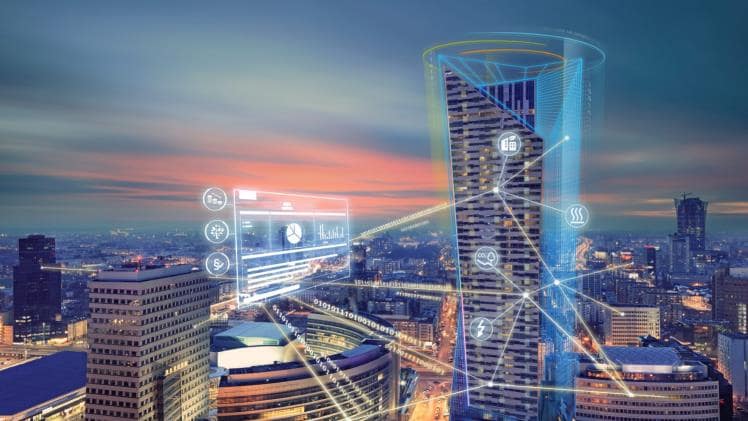It would be hard to be productive working inside large buildings without air conditioning in hot and humid countries. However, the usage of air conditioners in buildings consumes a large amount of energy, which increases the operating costs and leads to negative environmental impacts. There are more modern solutions, such as centralised cooling systems and district cooling.
But are they enough? There is a better alternative to cool large buildings: Cooling as a Service (CaaS), and CaaS providers utilise data to provide efficient cooling.
What is Cooling as a Service (CaaS)?
CaaS is a type of service where the customer pays CaaS providers for the cooling but not for the equipment. The providers own, install and maintain the cooling system in the building. In return, the customer pays for cooling as they pay for water or electricity.
The main advantage of this model is that CaaS providers use technologies to monitor and control systems in real-time. They measure and track the essential performance metrics of the cooling systems. Building owners have full access to the data collected, making it easy to make a data-driven decision on how much energy and cost they need to cool their buildings.
How does the CaaS provider deliver cooling to large buildings?
CaaS providers often use a chilled water system to cool their clients’ buildings. In simple terms, the cold water absorbs heat from the inside air, which is then circulated back to the plant to be cooled and recirculated. The CaaS provider constantly monitors the building’s cooling system to ensure it is operating at peak efficiency. By understanding how the system is performing, they can make adjustments to improve its performance and save energy.
Type of buildings that opt to use CaaS
CaaS is suitable for all types of buildings, but it is particularly beneficial for large buildings such as data centers, office towers, shopping centres, and hospitals. These buildings often have a high demand for cooling and require a significant amount of energy to maintain a comfortable environment. CaaS is an energy-efficient solution that can help these buildings to reduce their energy consumption.
Is lower energy consumption the only benefit of CaaS?
No, in addition to energy efficiency, building owners spend no capital expenditure on the typical district cooling or other centralised cooling system contracts. Since building owners only spend money on cooling on a pay-as-you-basis, there will be a lower operational expenditure. This means that building owners can use the money they would have spent on buying, installing, and maintaining a cooling system to invest in other areas of their business. Building owners also do not need to hire a group of staff only to manage the cooling system.
CaaS is also a scalable solution. If a building requires more cooling, the CaaS provider can easily add capacity to the system.
The key takeaway
CaaS is a data-driven cooling solution that can help large buildings to reduce their energy consumption. CaaS providers use technologies to monitor and control systems in real-time, which helps them understand how the system is performing. By understanding the performance of the system, they can make adjustments to improve its efficiency and save energy. In addition to energy efficiency, CaaS is also a scalable and cost-effective solution and is particularly beneficial for large buildings such as data centers, office towers, shopping centres, and other businesses.





